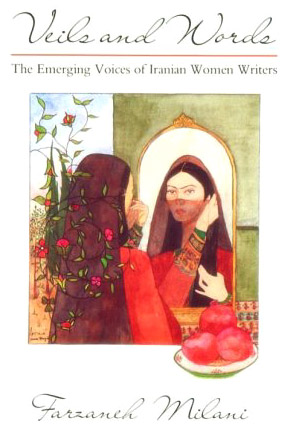|
|
|
The Turban, the Veil, and the Sword
For three consecutive weeks, the publication of 12 cartoons has triggered violent, even deadly, riots in more than a dozen Islamic countries. The controversy surrounding the cartoons addresses three troubling, but interconnected issues. First, they reflect the social drama unfolding within Europe itself, mainly the presence of a large number of Muslim immigrants within its tightly knit communities. Secondly, the cartoons draw attention to the most volatile issues of concern within the Islamic community itself: violence, the representation of Islam in the West and gender relations. And lastly, they focus on three of the most contentious symbols of strife between the Islamic and the Western worlds: the turban, the veil and the sword or its modern counterpart, the bomb.
Although the turban predates Islam, it became the insignia of Muslim identity. For centuries, the expression "to put on the turban" was synonymous with conversion to Islam. The prophet Mohammed, called "the Weaver of the Turban," designated this headgear as "the crown of the Arabs." He associated it with honor, dignity, manhood and piety. In many Islamic narratives, Adam and the angels were turbaned in the Garden of Eden. Turbaned angels are featured in Islamic painting. It was only with the advent of the modern era that the turban became a contentious issue within the Islamic community. Governmental decrees required or outlawed it. Mustafa Attaturk and Reza Shah Pahlavi banned it in Turkey and Iran. They confronted mass protests over its forced removal. Conversely, Mullah Muhammad Omar, the leader of the Taliban, required all men to wear their turbans straight on their heads. And more recently, in the West, the demand of detainees' to be allowed to wear their turbans was the first act of collective defiance at the U.S. prison at Guantanamo Bay, Cuba. Negative representation of the turban in the West is nothing new. It has appeared as the villain's headgear of choice in several Western popular hits, such as the movie "Aladdin" and the best-selling novel "Harry Potter." The Danish cartoons, however, take the negative representation of the turban to a new low. In one, the turban, inscribed with a verse from the Qur'an, is not only associated with terrorism, but with the prophet Muhammad himself, a gratuitous insult. Like the turban, the veil is used as another defining feature of the Islamic world in the cartoons. The veil predates Islam and its association with Islam in the West does not go as far back as the turban. Indeed, medieval European literature depicted Muslim women mainly as sultanas, queens, and princesses. None of them wore the veil. The image of a victimized Muslim woman, trapped in her veil a prison shrunk to the size of her body is a byproduct of the last four centuries. Languishing in her segregated space, she began to appear over and over again in Western novels, paintings, postcards, advertisements, and movies. She became an object of pity, but also of desire, in the West. Worn and respected by many Muslim women, the veil also has served diverse political ideologies within the Islamic community in the past century. Its elimination or reinstatement has been used as a shortcut toward or away from modernity, an attempt to restore a lost order or to symbolize relationships with the West. It has been an emblem of progress or backwardness, a badge of nationalism or domination, a symbol of secularism or Islamism. In recent decades, Muslim women have gone public with their views of politically mandated veiling and compulsory unveiling. They have organized sit-ins, started death-fasts, and suffered jailing or public humiliation to make their feelings known. Onto this tense scene, in which extremists -- on both sides -- are striving to force a clash of Western and Islamic civilizations, the Danish cartoonists come blundering. The caption under one cartoon reads: "On the blackboard it says in Persian with Arabic letters that Jyllands-Posten's journalists are a bunch of reactionary provocateurs." The cartoonists, then, knew full well their caricatures would be explosive. I condemn violence and consider free press a vital element of democracy. But with that freedom comes responsibility. And here, in a dangerously polarized world, the cartoonists fell short. About the author:
|
